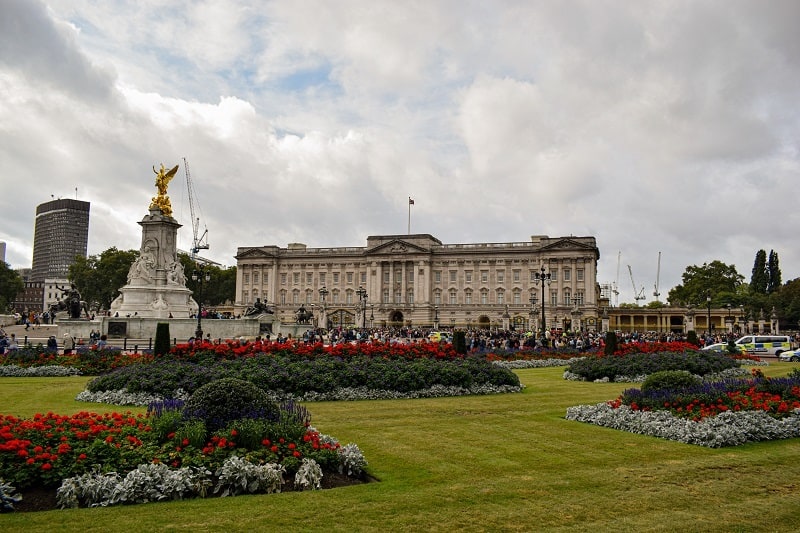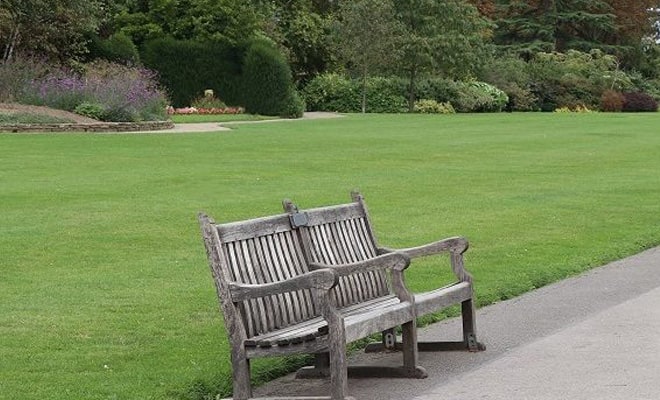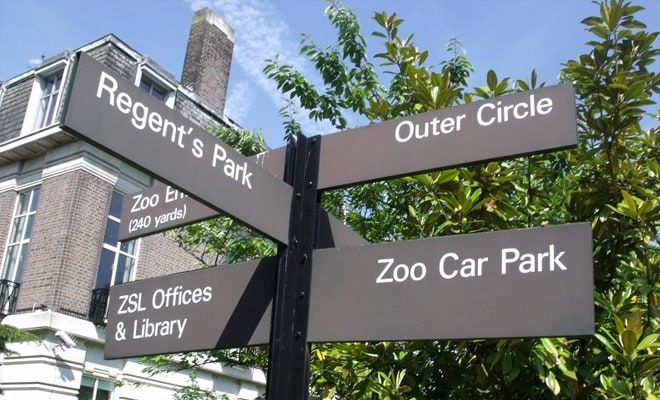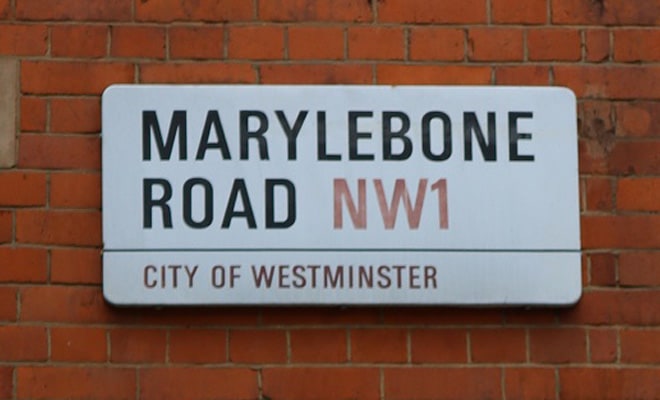Attic have built a high-tech storage facility just an arrow’s flight from Regent’s Park. Allow us to reveal a little more about the old days of our new back yard.
Regent’s Park lies right on the doorstep of Attic Self Storage in Marylebone (Rossmore Court, Park Road, London NW1 6XX if you want to say hello) and while nowadays it might seem like a lovely place for a cheeky family picnic in the heart of London, it certainly wasn’t always so.
The Royal Roots of Regent’s Park
The original woodland and everything in it was the property of The Crown. The regular hoi pelloi, riffraff, and plebs like you and I were met with armed guards and a flashing neon KEEP OUT sign, even though neon hadn’t been invented back then.

Up until the English Civil War, this whole area of sprawling ancient woodland and outstanding natural beauty was pretty much left to grow and blossom and provide a natural habitat for whichever animal it was fashionable to kill that particular season. Deer, Foxes, Squirrels, Rabbits, Badgers, Hedgehogs, Peacocks, Blackbirds, Hamsters, Goldfish – anything the elite ruling class could shoot, squash, maim or trample was on the menu.
How Frightfully Uncivilised
After chopping off King Charles 1st’s head, the Commonwealth Government (1649 – 1660) under Oliver Cromwell followed up by chopping down many of the trees to pay off the debts they’d incurred in the process of battling their way to power.
When the old round-head and original C-word himself subsequently died and Charles II clambered his way back onto the throne, control of the park returned to The King. The reinvented monarch wasn’t into hunting deer, chasing foxes or beheading badgers. Although he was part of a long bloodline of people who did quite like making vast sums of money off their subjects – so for the next 150 years the land was leased out to tenant farmers.
We should probably point out at this point that renting a bright, secure, CCTV monitored, individually alarmed space at Attic Self Storage Marylebone is much more reasonably priced by comparison.
The Mad, The Bad and The Beautiful
In 1811, one of the lesser royals spotted a greater financial opportunity. London was spreading north rapidly, and more money could be made by building on the parkland than by farming it.

The original idea for the development of Regent’s Park was the brainchild of the errant son of ‘Mad’ King George III, who had just been upgraded from Prince of Wales to become Prince Regent (and eventually King George IV in 1820).
The Prince formerly known as Prince, was eager to leave his own skid marks on the blank pages of history by spending his time swanning, philandering and carousing his way around the capital and splurging a vast fortune on the construction of a domed and minareted Indo-Saracenic vanity project down by the sea (better known as Brighton Pavilion).
But The Regent wanted his own pad in London and decided he required something befitting his rampant ego, extravagant lifestyle and rapidly expanding waistline. He wafted his hand in the air and demanded the immediate construction of a new summer palace, private playground and landscaped labyrinth of luxury, shielded from the prying eyes of the general public by trees and fences and, no doubt, a pack of vicious purple-dyed Labradoodles.
As is so often the case, the next in line to the throne was a spoilt brat with a bizarre sense of divine privilege and unshakeable self-importance. Dear old dad might have had a few mental health issues but, by all accounts, he was a good bloke compared to his extremely boo-hiss badson.
It’s Competition Time
So, a horde of masonic architects stepped forward with their trouser legs rolled up and their hands holding out their own expert designs for the area. But only one winner’s name pops up if you do a quick Google search:
John Nash.
Allow me to cut & paste:
‘John Nash, a government architect, produced a scheme that was bold enough to appeal to the Prince. The area, renamed The Regent’s Park, was designed as a huge circle with a lake, a canal and the new royal residence inside. It would be linked to the Prince’s other home at St James’s Palace by a fine processional road. To pay for it, Nash planned 56 villas in the park and a series of grand Regency terraces around it’.
The Best Laid Plans

The complete scheme was never implemented because the ‘barmy’ Prince Regent spotted a cat, lost interest in the summer palace idea, and turned his attention to giving Buckingham Palace a (turret-to-torture-dungeon) Makeover instead. If you’re involved in the building trade, you probably deal with similar clients today.
The idea of a summer palace was dropped and only 8 villas were built, once a supplementary construction team had defined the northern boundary of the park by opening the Grand Union Canal in 1814.
Doing It In The Park
Regent’s Park was developed and landscaped throughout the 1810’s and 1820’s as an area of leisure for the royal family and other aristocrats. It presently occupies an area of 487 acres (197 hectares) north and east of Marylebone and many elements of Nash’s original scheme survive to this day. The processional route to St James’s Palace was built and became Regent’s Street, for instance.
Within the park, each villa had mature trees planted all around the place, to shield it from the neighbours and make the residents feel like they were living on a private estate, albeit in the middle of a major urban centre. Each terrace looked out on what appeared to be a country park with sheep and chickens and not a common oik in sight.
NO ADMITTANCE. STAY OUT. DANGER OF DEATH.
That’s right. The only people allowed in Regent’s Park originally were royalty, residents of the villas and terraces, and the ‘carriage set’ who took part in weekly Chelsea Cruise-style custom-carriage showing off sessions around the circular road system.
But regular smog dwelling Londoners were feeling a little left out.
In 1835, before a riot had even started, the powers that be granted public access (in a limited and specific way) to the east side of the park. Six years later in 1841, regular folk were finally allowed to visit the whole of Regent’s Park, leave their litter behind and fly tatty homemade kites from the top of Primrose Hill nearby.
Let The Gentrification Commence…
Local societies leased the space left by the unbuilt villas. One of the first to move in was the Zoological Society, which employed its own architect, Decimus Burton to create a prison for rare and exotic animals from around the world out of concrete and iron and pieces of old cassowary shell. And lo! London Zoo was born. More on this highly lucrative animal breeding factory next week.
The Royal Botanic Society laid out the Inner Circle with lawns and a lake. The Royal Toxophilite Society introduced archery to the park. The United Mole Breeders Association of Great Britain had their application turned down, otherwise they’d have had a field day. That last one was a joke.
Landscape! Landscape! Landscape!
Between them, the societies created the mix of gardens, recreation and formal buildings, which surround Attic Self Storage Marylebone today. The park was bombed during World War 2 and rubble from buildings destroyed in the blitz was dumped on the lawns. But the damage was brushed aside, and the park still gives visitors a taste of what elegant life would have been like in Regency London. Only without the champagne and carriages.
Here are some of the main attractions and architectural eye-candy that somebody with a unit at Attic Self Storage can enjoy when they decide to take a break from shifting boxes and packing away crockery and wander off to meet the locals. Welcome to the Inner Circle:
Queen Mary’s Rose Garden. In the 1930’s the Royal Botanic Society decided not to renew its lease, and in its place the formal flower beds of the Rose Gardens were laid out in a neat, ordered manner to make everybody calm down a bit. A quiet place where old people come to sit on a bench and younger Londoners come wearing lycra and earbuds to practice olfactory mindfulness whilst eating their quinoa sprinkled yoghurts, innit dough?
The Open-Air Theatre. Began popular performances back in the early thirties, which will no doubt continue the other side of lockdown season. During the summer months you can go there to eat strawberries and enjoy A Midsummer Night’s Downpour. This is the capital of England after all.
Lawns, Fields and Sports Pitches. Much of Regent’s Park is used for various sporting events, particularly cricket*, in which games can last up to 3 months if you follow the rules properly. Look out also for groups of tipsy West End workers and City Boys in shorts playing softball, rounders or just impromptu games of chase the wasps off the prosecco in the late summer months.
*Cricket is believed to have begun possibly as early as the 13th century as a game in which country boys bowled at a tree stump or at the hurdle gate into a sheep pen. This gate consisted of two uprights and a crossbar resting on the slotted tops; the crossbar was called a bail and the entire gate a wicket. The fact that the bail could be dislodged when the wicket was struck made this preferable to the stump, which name was later applied to the hurdle uprights. Early manuscripts differ about the size of the wicket, which acquired a third stump in the 1770s, but by 1706 the pitch—the area between the wickets—was 22 yards long.
Lord’s Cricket Ground itself is just a decent outfielder’s balls-throw-away from Attic Self Storage Marylebone’s shiny new reception doors.

The Central London Mosque is even closer than that, its prominent golden dome nestling amongst the treetops by the traffic lights. The building was designed by Sir Frederick Gibberd and built between 1970 –1977. It may have a 4.7 star rating in Google Reviews but it’s even more impressive than that: the main hall can accommodate over 5,000 male worshippers with women praying on a balcony above.
The mosque roof supports an enormous chandelier with a vast swathe of carpet below, and although there is very little furniture, there is lots of shoe storage space. (If you require individually tailored storage for shoes, we are conveniently located a mere 5 minutes hop away).
The inside of the dome is decorated with sacred geometric designs in the Islamic tradition and has a series of small stained-glass windows around its base, containing turquoise coloured 16-pointed stars. There is also a small bookshop and halal café on the premises. The mosque is joined to the Islamic Cultural Centre (ICC) which was officially opened by King George VI in 1944. The land was donated by the English King to the Muslim community of Britain in return for free land in Cairo donated by King Farouk of Egypt and Sudan on which to build an Anglican cathedral. And you thought your title deeds looked complicated.
Nearby, further back into the park, you’ll find Winfield House, the official residence of the United States Ambassador. It comes swaddled in 12-acres of grace-and-favour grounds, making it the second-largest private garden in the British capital after that of Buck House. And no, you’re not invited for tea.
Nearby you may be able to spy with your little eye six villas designed by Quinlan Terry, some of which are private residences for Arab royal families.
Our last, and most intriguing stop, squatting on the Primrose Hill and St. John’s Wood-side of the park at least, is the concrete and wire-framed marvel that comes alive at night with monkey screeches, wolf howls and a chorus of other animal cries.
No, not the boozer on the corner opposite the Jazz Café, we’re talking about Ye Olde London Zoo…



